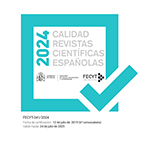La ambigüedad semántica en Andrea Camilleri. Propuesta para una traducción no estándar
Resumen
Andrea Camilleri, autor de novelas policíacas de éxito publicadas en numerosos países extranjeros, no escribe en la norma culta del italiano. Todas sus obras utilizan una interlengua que ha sido descrita como un hibrido entre el italiano y el dialecto siciliano. Aunque existen muchas novelas que se caracterizan por adoptar una variedad diatópica –pensamos en textos como Ragazzi di vita de Pasolini, o Quel pasticciaccio brutto di via Merulana de Gadda- Camilleri es el primero que realiza una elección semejante en un ámbito de literatura de género con vocación comercial. Eso lo ha convertido en una anomalía y en un reto para su publicación en el extranjero. Las editoriales han tenido que plantearse si traducir la variedad lingüística empleada, en detrimento de una comprensibilidad, o eliminar los rasgos dialectales en la traducción. La mayoría han optado por esta última alternativa, aunque muchos traductólogos y traductores han avanzado otras propuestas. En el centro de este debate está el axioma de que la dificultad lectora de las novelas de Camilleri surge en el momento de traducirlas. Este trabajo quiere proponer un enfoque distinto. El punto de partida es una simple observación: el léxico empleado por Camilleri dificulta la lectura también al lector italiano. Solo una minoría de italianos hablan y entienden el siciliano. La problemática polisistémica que conlleva la traducción a una lengua meta, en realidad, ya existe en la edición original. Si es así, el dialecto cumple en las novelas policíacas de Camilleri una función inédita: poner al lector -también al lector italiano- dentro de un juego de descodificación. Intentaremos sacar a Camilleri del debate sobre la traducibilidad del dialecto para colocarlo en un marco paralelo y más amplio: el del autor que juega con la lengua y su ambigüedad semántica.
Descargas
Descarga artículo
Licencia
La revista Cuadernos de Filología Italiana, para fomentar el intercambio global del conocimiento, facilita el acceso sin restricciones a sus contenidos desde el momento de su publicación en la presente edición electrónica, y por eso es una revista de acceso abierto. Los originales publicados en esta revista son propiedad de la Universidad Complutense de Madrid y es obligatorio citar su procedencia en cualquier reproducción total o parcial. Todos los contenidos se distribuyen bajo una licencia de uso y distribución Creative Commons Reconocimiento 4.0 (CC BY 4.0). Esta circunstancia ha de hacerse constar expresamente de esta forma cuando sea necesario. Puede consultar la versión informativa y el texto legal de la licencia.










